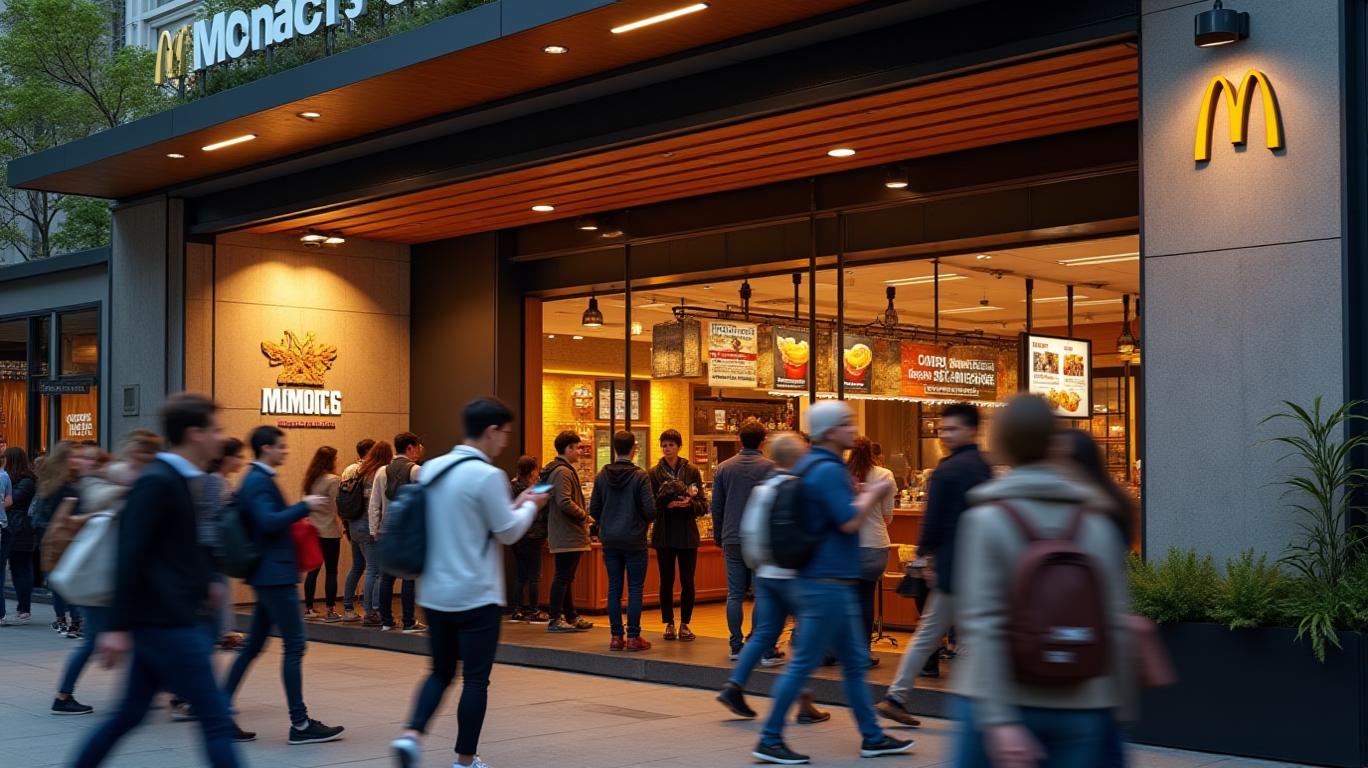Burger Battles: McDonald's Q1 Results Signal a Shift in Fast-Food Strategy
The golden arches are under scrutiny. McDonald’s first-quarter 2025 earnings, released on May 1, revealed a 1% decline in global comparable sales—a stumble for a brand synonymous with consistency. Yet beneath the numbers lies a story of reinvention. As competitors like Chipotle and Yum Brands grapple with their own slowdowns, McDonald’s is betting on nostalgia, affordability, and loyalty to reclaim momentum.
Ask Aime: How does McDonald's decline in global sales affect its stock performance?

The Stumble: Sales Slump and Structural Shifts
The Q1 results painted a mixed picture. U.S. comparable sales dropped 3.6%, the worst performance since the pandemic, driven by lower guest counts. Middle- and lower-income consumers, squeezed by inflation, cut back on fast-food spending—a trend CEO Chris Kempczinski called “a new reality.” Internationally, the U.K. dragged down operated markets, while the Middle East and Japan powered a 3.5% gain in licensed markets.
Ask Aime: What's up with McDonald's earnings?
But the most telling metric was the loyalty program’s clout: $31 billion in trailing-12-month sales across 60 markets, with $8 billion in Q1 alone. This highlights McDonald’s reliance on repeat customers—a strategy that could buffer against economic volatility.
Data Spotlight:
The Counterpunch: Nostalgia and Necessity
To reignite growth, McDonald’s is leaning on two pillars: nostalgia and affordability. On May 5, the chain reintroduced McCrispy Strips, its first permanent menu item in four years, after testing showed strong demand for crispy chicken tenders. The move echoes the 2023 comeback of the Big Mac’s “secret sauce” formula, proving that reviving classics can drive traffic.
Meanwhile, the $5 Meal Deal, launched in 2024, remains a lifeline. Kempczinski called it a “value anchor” amid rising prices, though the underperforming McValue menu—a $1 item with a paid purchase—hints at customer skepticism toward gimmicks.
The Minecraft movie tie-in in April also offered a blueprint for success: limited-time offers with collectible toys boosted traffic, even as Q1 sales lagged. This suggests McDonald’s can still capitalize on pop-culture moments to distract from its struggles.
The Long Game: Loyalty and Liquidity
Operating income fell 3% to $2.65 billion, but restructuring charges of $66 million skewed the picture. Excluding these costs, adjusted EPS hit $2.67, narrowly beating expectations. This underscores McDonald’s financial resilience: free cash flow rose 7% to $1.2 billion, and the company reaffirmed its $8 billion buyback plan.
Yet investors remain cautious. Shares dipped 1.5% post-earnings, reflecting skepticism about the U.S. recovery. Kempczinski’s challenge is clear: convince Wall Street that McDonald’s can balance nostalgia with innovation.
Conclusion: Reinvention or Regression?
McDonald’s Q1 results reveal both vulnerability and opportunity. The sales slump in core markets underscores the fast-food industry’s broader economic headwinds, but the loyalty program’s $31 billion annual sales—and the McCrispy Strips’ reintroduction—signal a path forward.
If the chain can sustain momentum through value-driven pricing, limited-time nostalgia items, and global market diversification, its stock could rebound. Investors should watch two metrics: U.S. guest count recovery and the success of the Snack Wrap launch later this year. For now, the golden arches remain standing—but their luster depends on adapting faster than the economy falters.
John Gapper is a senior financial editor at [Your Publication], covering global markets and corporate strategy.

_b905d9341749265671656.jpg)








